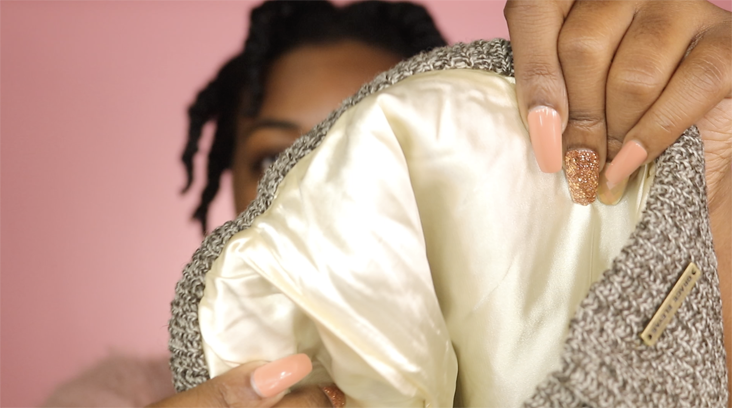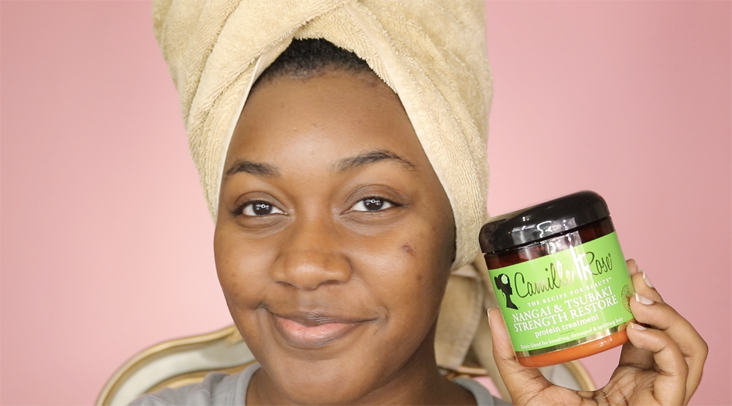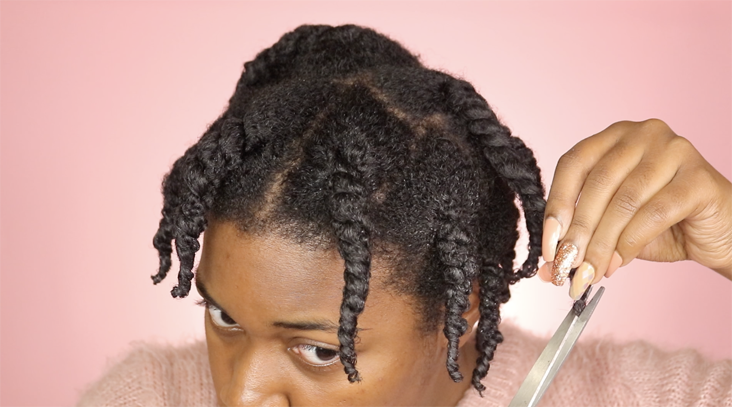When you’re trying to achieve your goal hair length, breakage isn’t your friend. Have you noticed a loss of hair after a protective style? Does your hair often shed, leaving tiny pieces of hair everywhere when combing or brushing?
If you’re experiencing shedding or breakage, several factors can cause this, from too tight hairstyles to what type of fabric you sleep on at night. You may not even realize it. We have five quick lifestyle changes you can make to prevent hair breakage.

Beauty Sleep On Silk or Satin
The type of fabric you sleep on at night could have a huge effect on the hair. Sleeping on cotton pillowcases or sheets can be very rough on the strands, creating friction, and friction equals great potential for breakage and shedding. Switch your pillowcases to silk or satin. Opting to sleep on a silk or satin pillowcase will significantly help reduce and prevent waking up to the horrifying image of hair everywhere. If you don’t want to swap your bedding, bonnets, hair wraps, and even caps are available that you can incorporate into your daily routine.

Recommended for Active: Grace Eleyae Slaps (Satin-Lined Caps), $24; CurlCap Satin-Lined Hoodie, $50
Recommended for Sleeping: Vernon Francois Sleep-In Silk Bonnet, $25; Slip Silk Pillowcase, $85-$105
Get Protective When Heat Styling
Frying your hair with too much heat is a surefire way to experience breakage, so it’s important to use a heat protectant, set low to medium temperature settings, and ensure minimal passes when using any styling tools, from blow dryers to pressing combs. In addition, using heat in moderation is helpful. While you may not have heat damage after one style, it can occur over time, leading to limp and lifeless hair. Learn more about protecting hair from heat damage.
Go Deep with a Protein Treatment
There’s good news. If your hair is already heat damaged. you’re experiencing breakage and shedding, or you’re surviving the aftermath of a stressful style, special treatments can aid in bouncing back to health. A protein treatment is a great first step after identifying breakage and damage.
Protein treatments work to strengthen the weakened hair shaft due to damage from heat, chemicals, and color. Some treatments are more intense than others are, so be sure to choose carefully. You don’t need to apply a protein treatment every time you wash your hair, as too much protein can be counterproductive. However, you should incorporate it into your routine regularly or as needed. One protein treatment per month is fairly standard and a good starting point when trying them for the first time.

Recommended: Camille Rose Nangai & Tsubaki Strength Restore Protein Treatment & Hair Oil, $10-$16; ApHogee Two-Step Protein Treatment, $4-$15
Dead Ends? Let Them Go!
Holding on to dead, splitting ends is never the answer. In fact, split ends will only make your hair weaker overall, resulting in breakage. The best thing you can do is just let those ends go and get a trim. Your hair is much better off and healthier when you get regular trims. Typically, every two to three months should suffice.

Switch Up Your ‘Do and Avoid Extreme Tightness
Many people are creatures of habit, especially when they find something that works for their lifestyle and hair. It’s natural and beneficial to fall into a routine sometimes and do what’s most convenient, but when it comes to your hairstyle, try switching things up. Here are a few ways to avoid breakage with your hairstyle choices.
Protective Styles: Braids and Sew-ins
Be aware of tightness. You should never be in severe pain after having your hair done. If the technique your stylist is using is too tight for your head, speak up. If a protective style is too tight, you could experience minor breakage and/or total hair loss whether it’s temporary or permanent, also known as traction alopecia.
Clip-in Extensions and Accessories
Try giving your hair a break from the combs, which can be harsh on the hair. Take clip-in extensions and accessories out before bed and don’t sleep in them to help avoid breakage and snagging. Wearing combs in your hair everyday can eventually lead to breakage, and you may be able to identify this by noticeably shorter sections where you typically place your clip-ins or accessories.
Ponytails and Parts
Simply switch up the direction every once in awhile. If you wear your hair in a high ponytail on most days, try a mid or low ponytail some days. If a left part is your signature, go with a middle or right part.
Learn more about the care and keeping of natural hair on the Ogle School blog.



